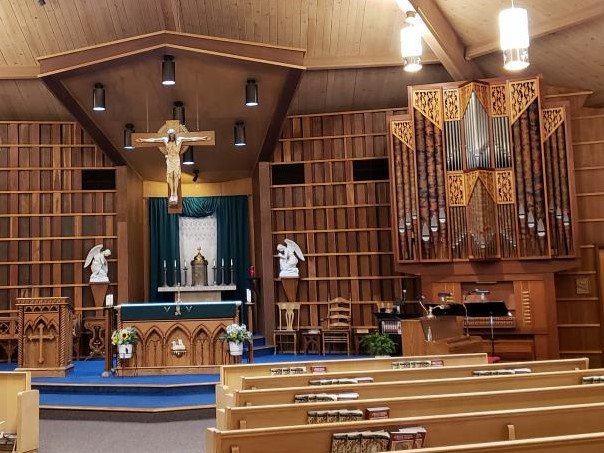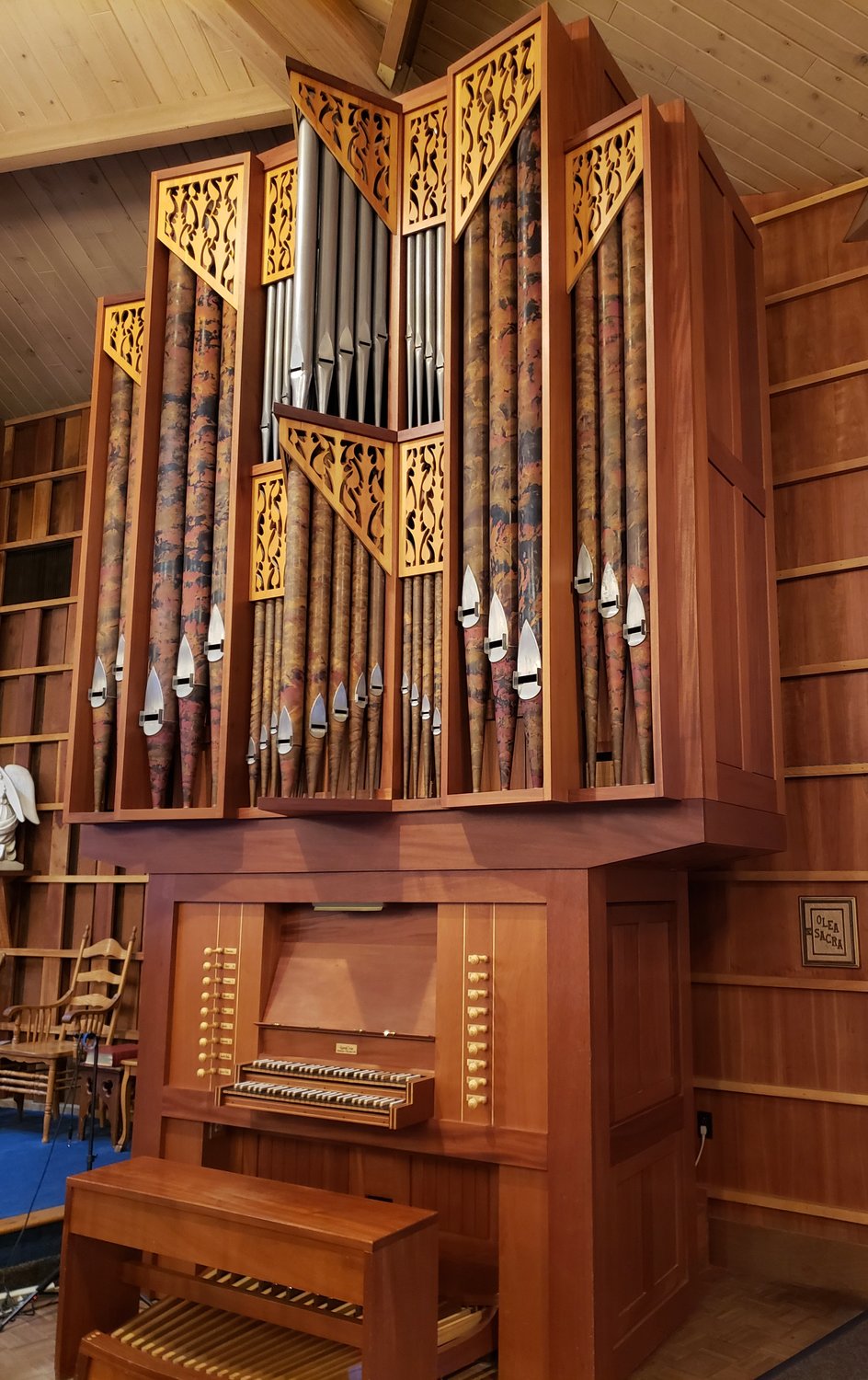Pipes are calling — St. Clement Church organ is a jewel from the Emerald Isle

SCROLL THE ARROWS to see more photos.
For 40 years, the organ in St. Clement Church in St. Clement has been speaking with a distinct brogue.
The church was the first in the United States to be outfitted with an instrument designed and custom-built by Kenneth Jones Organ Builders of Co. Wicklow, Ireland.
“It’s in very good shape,” said Father Jeremy Secrist, pastor of St. Peter Parish in Jefferson City, and the diocese’s moderator for pipe organs. “It’s definitely a testament to its construction and voicing. Proof positive of the enduing value of real pipe organs.”
Kenneth Jones grew up in Ireland and studied organ-building mostly in Holland and worked in West Africa for 16 years. He founded his own company in 1973, building instruments for cathedrals, universities and parishes throughout Ireland, England and West Africa.
“He gave a new impetus to organ-building, richly inventive in organ-case design, layout and mechanism design of any of his generation,” according to the company’s website (kennethjonespipeorgans.com).
Father Edward Doyle, now deceased, a Dublin native and priest of the Jefferson City diocese, was pastor of St. Clement Parish from 1978-87.
The parish’s previous organ was near the end of its serviceable life, and parishioners were weighing their options.
Fr. Doyle was visiting family in Ireland in 1981 when he heard an organ built by Mr. Jones.
The priest visited the company’s workshop in Bray and liked the sounds he heard there.
He obtained cost estimates and presented the information to the St. Clement Parish Council upon his return.
Convinced by Fr. Doyle’s enthusiasm and finding the cost to be within acceptable parameters, the council invited Mr. Jones to visit the church.
Arriving in November of 1981 to measure the space and acoustics, he returned to Ireland to design and build an instrument with 888 pipes distributed over 17 ranks and controlled by 14 stops.
He came back to St. Clement in June 1983 to install the newly built instrument in a magnificent case near the front of the church, where it could be readily seen and heard.
Fr. Doyle described the instrument as the “Rolls-Royce of organs,” having a sweeter sound than most of its contemporaries.
Instead of a digital, electronic or electro-pneumatic apparatus, it has an elaborate collection of rods, slats and counterweights — centuries-old technology that gives the organist a direct, mechanical connection from the keys to the pipes.
“It’s what opens the pallets to the let air into the pipes to make it speak,” said Fr. Secrist.
Such an organ is commonly known as a “tracker.”
Fr. Doyle predicted that the solid workmanship and simple mechanism would allow the organ to last for hundreds of years.
“Definitely among Catholic churches, it was the most recent tracker instrument that’s been built in this diocese,” said Fr. Secrist. “It’s continued good sound is testament to the durability of instruments that make use of fully mechanical action.”
He noted that the St. Clement organ doesn’t speak with the same kind of high-German Baroque voice that was common for new organs in the late 20th century.
“I would describe it as a very Catholic instrument,” said Fr. Secrist. “It doesn’t have a strident diapason chorus. It’s made to function, to work, in Catholic Liturgy. And it does.”
Comments
Other items that may interest you
Services
The Catholic
Missourian
2207 W. Main St.
Jefferson City MO 65109-0914
(573) 635-9127
editor@diojeffcity.org








